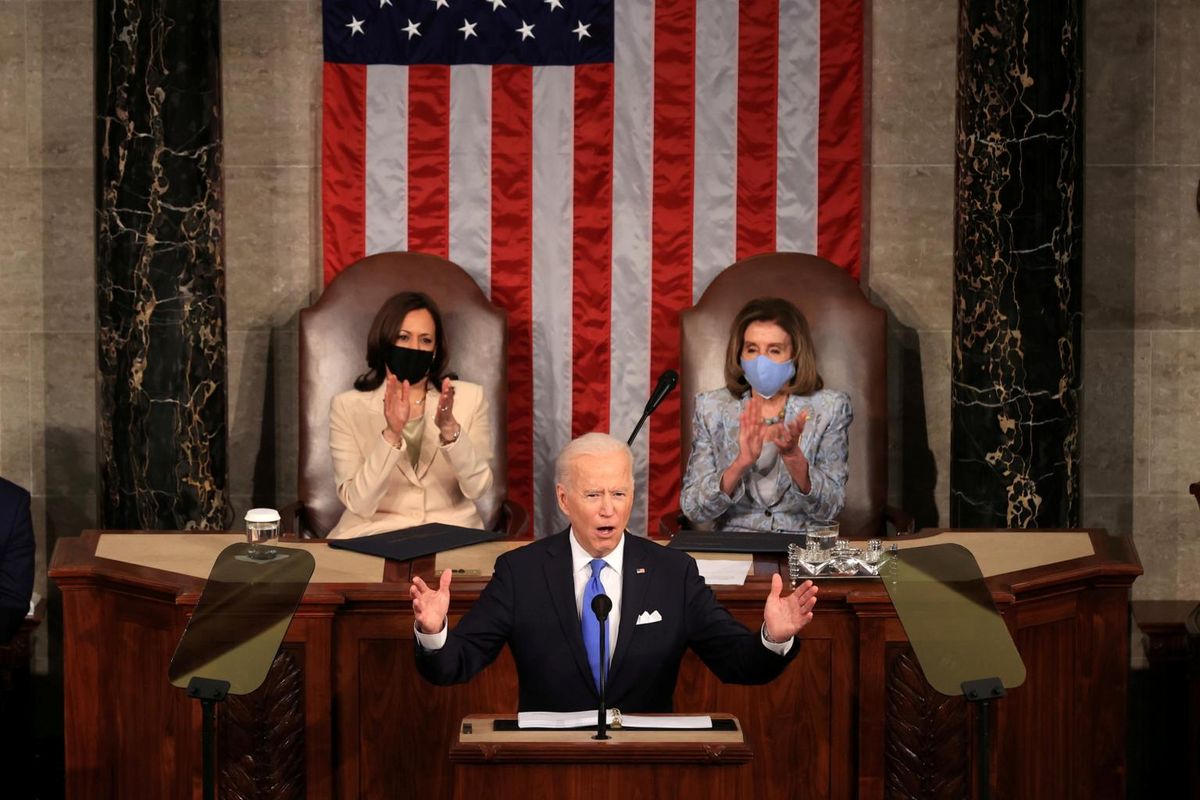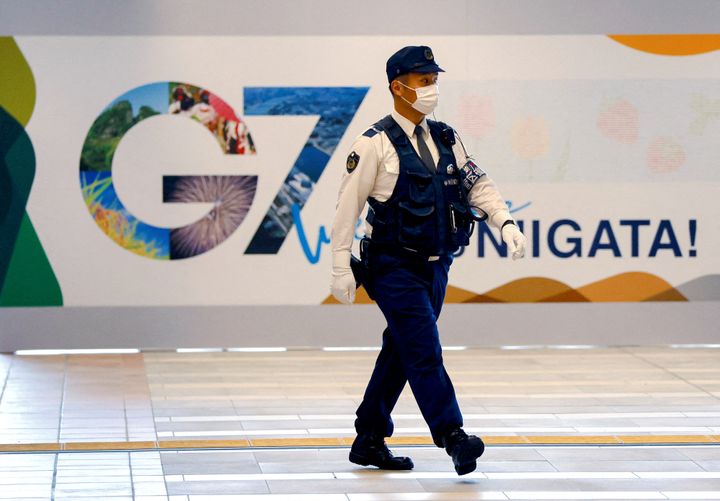What exactly happened in Biden’s address to a joint session of Congress?

A few minutes every morning is all you need.
Stay up to date on the world's Headlines and Human Stories. It's fun, it's factual, it's fluff-free.
Both an address to a joint session and a State of the Union address are judged by the proposals set forth and, interestingly enough, how many standing ovations such proposals receive from the audience.
What’s an address to a joint session of the United States Congress?
- It’s pretty much the same as a State of the Union address, which is meant to recap a president’s successes in the past year and outline their agenda for the coming one.
- The reason it’s called an address to a joint session of Congress dates back to President Ronald Reagan, who decided that it was silly for a president to remark on the events of the past year during their first address, because they weren’t in charge for the past year.
- Both an address to a joint session and a State of the Union address are judged by the proposals set forth and, interestingly enough, how many standing ovations such proposals receive from the audience.
- The audience usually consists of members of both the Senate and the House of Representatives, their guests (each member of Congress is allowed one guest), the president’s cabinet (minus one, who is called the “designated survivor”) and, in the case of this administration, the first lady and the second gentleman, along with their guests.
- The Speaker of the House and the vice president – whose other role is as the President of the Senate – also sit in attendance right behind the president as he is giving his speech.
- This year, the numbers were greatly reduced. Members of Congress entered a lottery to decide who would be in attendance and only the secretaries of state and defense were there from the cabinet, meaning there was no need for a designated survivor.
- In a normal year, there would be around 1,600 people in attendance. This year there were only 200.
What did Biden say?
- Biden kicked the whole thing off with a nod to Vice President Kamala Harris and Speaker Nancy Pelosi, noting that it’s the first time in history that those two positions have been held by women.
- The most obvious point of discussion for Biden was the pandemic. He pointed to his administration’s success so far in distributing the vaccine, getting more than 200 million doses administered by his hundredth day in office.
- “Go and get the vaccination. They’re available,” he urged Americans. “There’s still more work to do to beat this virus. We can’t let our guard down.”
- Biden also emphasized his American Jobs Plan as a method for recovering from the recession brought about by the pandemic that has left more than 20 million Americans unemployed. Biden has said that the plan would employ millions of Americans over the next decade.
- The American Jobs Plan is a US$2.3 trillion plan that the administration is trying to pass that would spend the next decade investing in American infrastructure, like roads and bridges, but also things like broadband internet.
- The big proposal of the night came with the American Families Plan, a US$1.8 trillion plan that would give two years of universal preschool, as well as two free years of community college to all students. It would also provide a national paid leave program and provide US$800 billion in tax breaks for families.
- The other major push in the speech came from Biden in his call to work on climate change. He didn’t discuss any specific policies extensively, but he did push firmly for it throughout sections relating to other things, like in his jobs plan.
- He also briefly mentioned a number of things in a smaller capacity, including gun reform, police reform and immigration reform.
So what now?
- Broadly speaking, there tends to be a direct relationship between how many words a subject has in an address to Congress and how serious a president is about that subject.
- That being said, some things, such as climate policy, have proved to be a major part of Biden’s agenda, despite relatively few words devoted to them during his speech.
- The other piece of the puzzle comes with bipartisan cooperation and Republican reception of the speech was relatively unfavorable. Republicans in the chamber tended to stay seated during standing ovations and showed little support for Biden’s ambitious plans.
- Biden’s plans still must pass through both chambers of Congress, something that might be difficult with the Senate filibuster, which requires sixty votes, meaning that Biden would need 10 Republican votes, instead of the standard 50+1 usually required to pass a bill.
- Overall, the speech was seen as a set of ambitious goals, but only time will tell just how many of them can actually be achieved.
Have a tip or story? Get in touch with our reporters at tips@themilsource.com




Comments ()